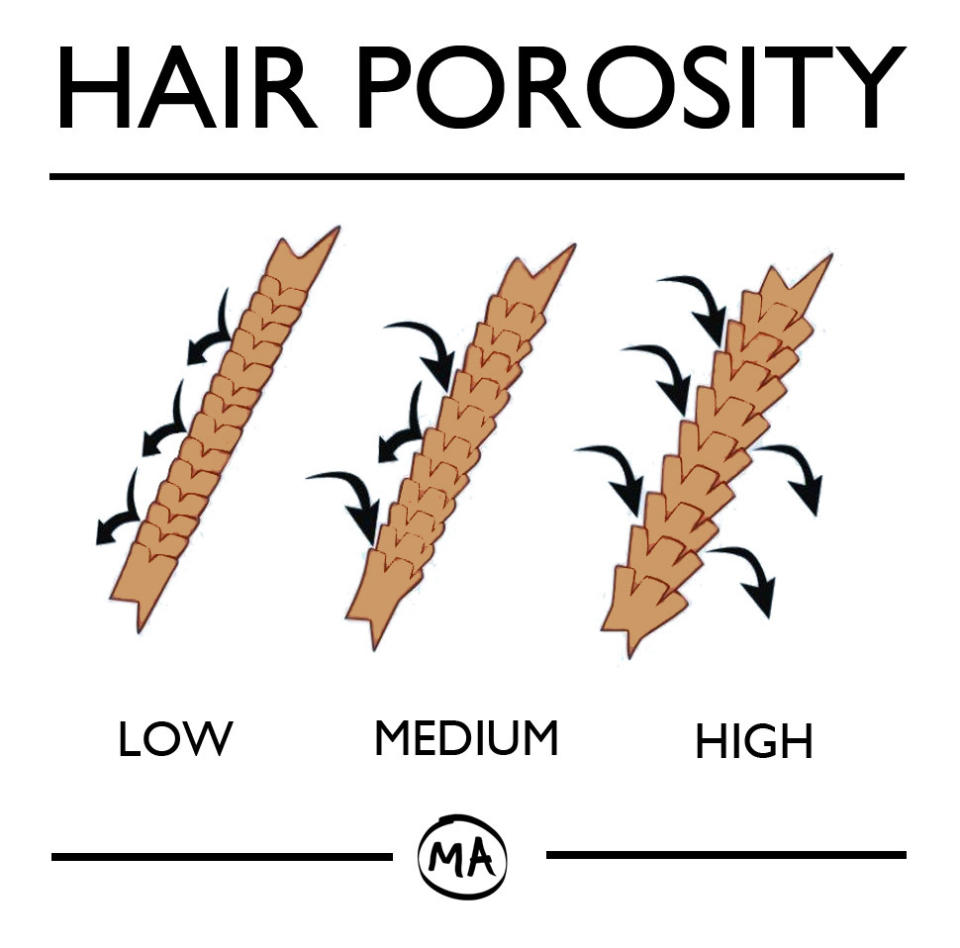Hair Hydration: Testing the Porosity of Your Strands
by Kadia Blagrove
Not all porosity levels are created equal; some hair types absorb moisture better than others. If you’re not familiar with the term, “porosity level” is the measure of moisture that can penetrate your strands. Unfortunately, not all of us can get away with a once-a-day spritz of leave-in conditioner. And there’s no one solution for moisturizing hair, either. There’s levels to this thing — “low,” “normal,” and “high” to be exact. You can assess how porous your hair is by taking the porosity test.

TEST YOUR POROSITY LEVEL
Finding out your porosity level is incredibly fast and easy! All you need is a glass of water and clean dry strands of your hair (you don’t want any product on your strands for this test). Place the strands in the glass of water, let it stand for 7 minutes, and determine your results using the information below.

LOW POROSITY: HAIR FLOATS TO THE TOP
This moisture issue is a biggie, especially for kinky and coily hair types. Moisture is not easily absorbed due to tightly shut hair cuticles. Because the strands naturally repel oils and moisture, hair is prone to build-up, since the product just sits on the strands. Low porosity does not mean hair is unhealthy; in fact, hair with low porosity is typically healthy and shiny.
TRAITS:
Resistant to water, creams, and oils
Water beads on hair
Hair takes long time to dry
Hair lacks elasticity
HOW TO MOISTURIZE: (Moderate) Heat and oils are the key to deep penetrating moisture. Steam your hair to open up your hair cuticles (basically, wash your hair in a hot shower), apply your moisturizer and seal the hydration with a light oil like avocado or coconut. Heated deep conditioners, hot oil treatments, and humectants, like honey, are great add-ons to your routine.

MEDIUM/NORMAL POROSITY: HAIR FLOATS IN THE MIDDLE OF THE GLASS
If your hair sank to the middle of the glass, you have a medium (or normal) porosity level. This means your hair requires the least amount of maintenance (score!). The hair cuticle is slightly raised, allowing moisture to penetrate the strands. Keeping your hair moisturized is no problem, unless you chemically treat your hair, which can affect your moisture retention.
TRAITS:
Hair easily absorbs moisture
Hair requires less moisturizing
Hair responds easily to dye and chemical treatment
HOW TO MOISTURIZE: Keep doing what you are doing! But beware of exposing your hair to too much protein, which can leave your hair feeling stiff. Also, be mindful of your heat and chemical usage, since they can alter your hair cuticles and land you into the high porosity level.

HIGH POROSITY: HAIR SINKS TO THE BOTTOM OF THE GLASS
If your hair sank to the bottom of the glass, you have high porosity. Due to highly raised cuticles (aka large gaps) along the hair shaft, hair absorbs more moisture than it is able to retain.
TRAITS:
Bumpy texture on strands
Dullness
Hair constantly tangles (due to chipped cuticles)
Frizz
HOW TO MOISTURIZE: Protein is the answer! Egg washes or protein based conditioners will help strengthen the hair cuticles — but don’t over do it; too much protein can leave your hair stiff and cause breakage. Deep conditioning is also very important to help repair your strands. Reduce frizz and help fill in the gaps by using heavy butters/creams, thicker oils, and leave-in conditioner.

